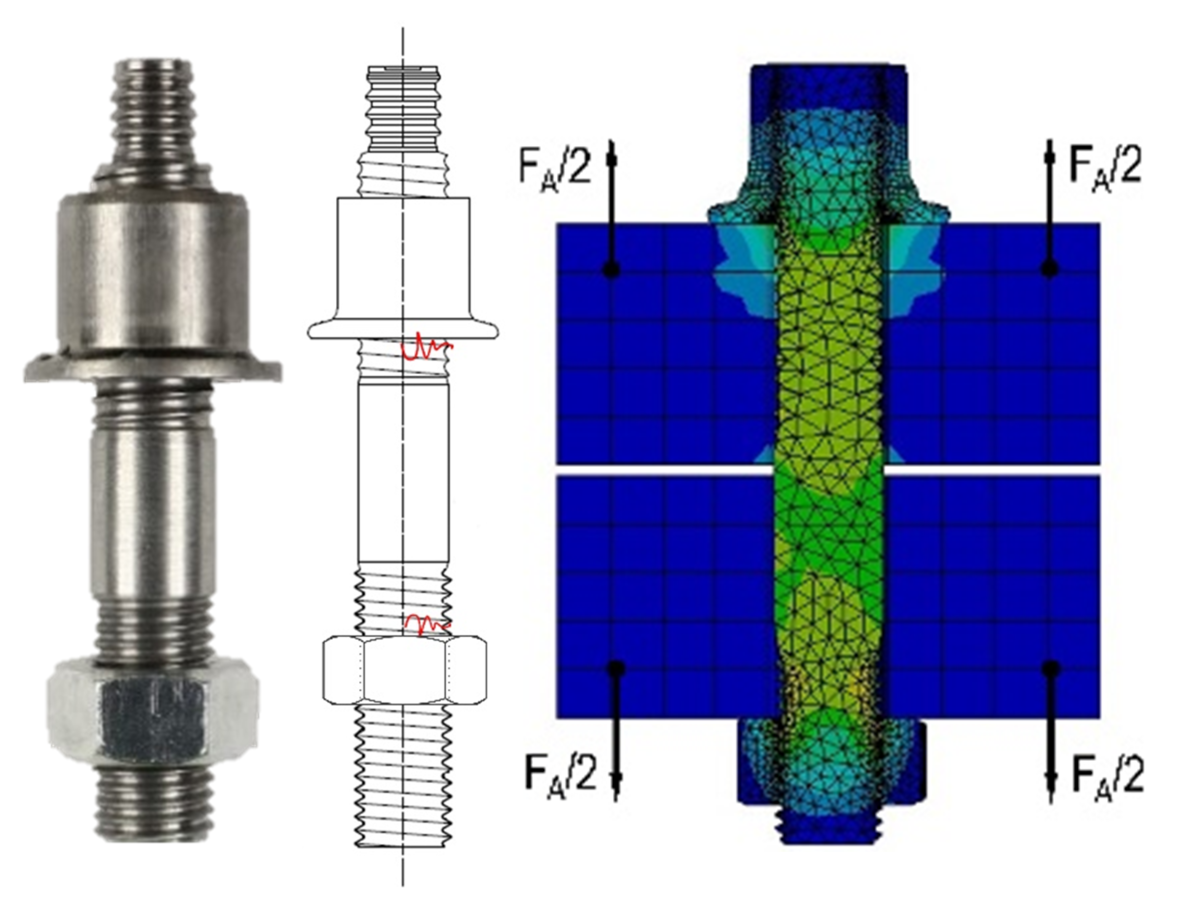In many manufacturing processes, the joining of components and assemblies is an important manufacturing step that significantly determines the cost and quality of the end product. The selection of suitable joining processes is therefore considered to be of central importance. In addition to the proven positive properties of classic bolted joints, there are significant disadvantages due to process-related variation in torque-controlled assembly. Prescribed maintenance intervals immediately after commissioning as well as during operation for cyclically stressed bolted joints are therefore mandatory. A representative practical example is the final assembly of the nacelle of a wind turbine at the manufacturer. Here, the substructure, consisting of the generator and the machine support, is connected by means of bolted joints. The limited accessibility of the screw connections during the operation of a wind turbine makes the prescribed maintenance intervals difficult or impossible.
The so-called Lockbolt systems maintain the pretensioning force over the service life due to high installation safety as a result of friction and torsion-free tightening. In addition, these systems are characterised by increased vibration resistance compared to equivalent steel construction bolts. As a result, these systems have a significantly lower maintenance intensity. However, the lack of design rules limited the widespread use of this technology. The subsequent intensive research work contributed to the preparation of DVS-EFB Merkblatt 3435-2 for the calculation of Lockbolts and facilitated the design in industrial constructions.
The hybrid connecting element, also called the Lock Stud system, combines the advantages of a Lockbolt with the advantages of a screw-in connection. The research topic aims to scientifically investigate the pre-tensioning force time as well as the load-bearing behaviour of Lock Stud systems. The stem bolt of a Lockstud system is characterised by a standardised metric ISO thread according to DIN 13-1 (screw-in side) and a groove geometry similar to the types A, B or C of lockbolts according to DVS-EFB Merkblatt 3435-2 (assembly side). This characteristic offers the potential for mechanical maintenance-free connections. Due to the torsion-free assembly and the resulting pretensioning force level in the Lock Stud system with low scatter, mechanically joined connections can be secured against self-loosening in operation by the moulded lock ring, so that the durability of construction can be guaranteed over the service life. For this purpose, lock Stud systems are tested with the aid of experimental and numerical investigations. Based on the investigations, the determined pre-tensioning force-time curves and load-bearing capacities are interpreted to enable more economical assembly and design.
In the course of the planned research project, recommendations for the design and execution of Lock Stud systems are to be developed as well as the basis for normative regulations for implementation in the EFB/DVS Merkblatt 3435-2. This will result in simpler verification according to VDI 2230 and EC3-compliant design rules for engineering firms (SMEs) among others. While executing companies in mechanical engineering and steel construction, they will thus be able to avoid the cost and time-intensive case-by-case examinations.


